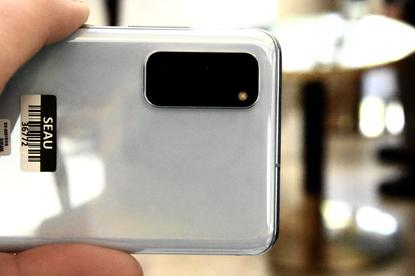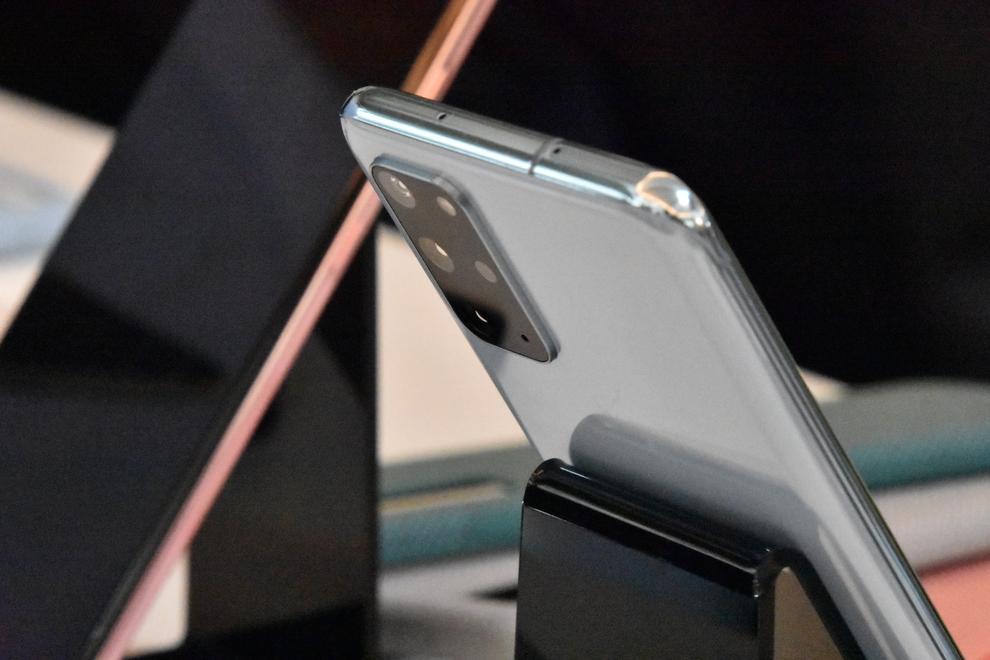Samsung Galaxy S20 & Galaxy S20 Ultra Hands-On: Samsung finally play camera catch-up
- 18 February, 2020 16:12

If 2019 was the year that Apple caught the incumbents of the Android ecosystem off guard, Samsung are hoping 2020 will be their year to do the same.
Fresh off their debut at Samsung’s most recent Unpacked hardware event in San Francisco, I had the chance to spend a little bit of hands-on time with the new Galaxy S20, Galaxy S20+ and Galaxy S20 Ultra 5G ahead of their March 6 Australian launch.
Though comparisons to 2018’s photography-centric S9 and S9+ might be apt, this year’s crop of flagship smartphones might be Samsung’s most camera-focused devices yet. Echoing achievements earned by Chinese smartphone vendors like Huawei and Oppo, the standard S20 and S20+ offer up to 3x optical zoom, 10x hybrid zoom and up to 30x digital zoom.
 Credit: Fergus Halliday
Credit: Fergus Halliday In addition and for the first time, Samsung’s latest S-series devices also come ready to film in up to 8K at 30FPS. This might not sound like that much of a big deal but, in some ways, it is. Even if recording 8K video content isn’t a possibility you’re likely to utilise on an everyday basis, it’s a compelling technical showpiece for just how powerful the sensors and processors in flagships like the Samsung Galaxy S20 are becoming that you can do it all.
Unfortunately, if this feature is something you’re keen to make use of, it’s probably going to be worth spending the extra to get yourself an S20 Ultra. From our hands-on experience with the devices, filming in 8K on the standard S20 proved noticably choppier than filming in 4K.
There’s also a new Single Take camera setting, which low-key might be one of the more exciting innovations that Samsung are introducing this time around.
 Credit: Fergus Halliday
Credit: Fergus Halliday Rather than add yet another camera setting you’ll probably forget to use into the mix, Single Take lets you hit record, point the camera on the S20 at your subject and let an AI do what it can with the results. It's marginally more time-consuming than taking photos normally but you're left with up to 10 shots and 4 videos at the end of the process. Overall, Single Take seems really neat in action - though I wish you could leave it running for more than just ten seconds at a time and that you could have more control over the results. The ability to just outright veto sepia filters wouldn't go awry.
There’s no word yet on whether Single Take will be retroactively added to older Galaxy devices but, from what I’ve used of it so far, I suspect it'll make the S20 camera experience feel plenty different in the meantime.
Building on these qualities, the S20 Ultra 5G sits as the apex predator of the lineup.
Like the name might suggest, it’s envisaged as a worthy alternative to Apple’s own photography powerhouse. To that end, the S20 Ultra features a quad-lens rear camera that combines a 108-megapixel main (wide) lens, a 48-megapixel telephoto lens, a time-of-flight sensor and a 12-megapixel ultra wide lens.
Those specs summarize neatly into the ability to take photos with up to 10x optical zoom and 100x digital zoom. That puts the S20 Ultra on par with beasts like the Huawei P30 Pro and Oppo Reno 5G. As with those devices, the 100x zoom mode is fairly limited in its actual utility but the middle-of-the-table settings allow more much more freedom in shot composition than the cheaper devices.
Using the S20 and S20 Ultra 5G next to one another, I initially found that there wasn’t a huge difference in how each device functioned at 4x zoom. However, bumping the dial up to 10x saw the extra megapixels at the S20 Ultra’s disposal make themselves known. Images taken using the more expensive device were significantly less noisy at higher zoom settings. That's not a particularly surprising revelation but if you're looking to choose between the two devices, it's worth knowing about.
 Credit: Fergus Halliday
Credit: Fergus Halliday Still, there’s something to be said about the standard S20. Even if it falls short of the high-end optics offered by the S20 Ultra 5G, the 3x zoom and improved low-light performance make it feel like a more than decent upgrade on last year’s Samsung Galaxy Note10+.
What’s more, picking up and handling the device, I found myself immediately drawn to and charmed by the smaller form-factor.
The trend towards larger smartphones and away from smaller screens is something of a self-fulfilling prophecy at this point. Again and again, consumers are asked to choose between a more compact form-factor and better specs or features - only to choose the latter.
 Credit: Fergus Halliday
Credit: Fergus Halliday Nevertheless, there’s something I find more personally appealing about the smallest device in Samsung’s S20 line-up. Sure, the S20 Ultra is the most technically adept of the three but it’s only able to be so because of the larger form-factor. It’s a bigger phone, so it only makes sense it has a larger battery and room for additional camera components.
By contrast, the Samsung Galaxy S20 feels like it does more with less. Despite the 4000mAh battery inside it, the 6.3-inch device feels almost freakishly lightweight. It’s not going to necessarily match the overkill-grade Ultra in a blow-for-blow comparison but it’s still going to give most other flagships a run for their money.
My head knows that the Samsung Galaxy S20 Ultra is the portable photography-focused machine I can’t wait to mess with but, at this stage, my heart might already belongs to the Samsung Galaxy S20.
The Samsung Galaxy S20, Samsung Galaxy S20+ and Samsung Galaxy S20 Ultra 5G are set to launch in Australia on March 6th.





